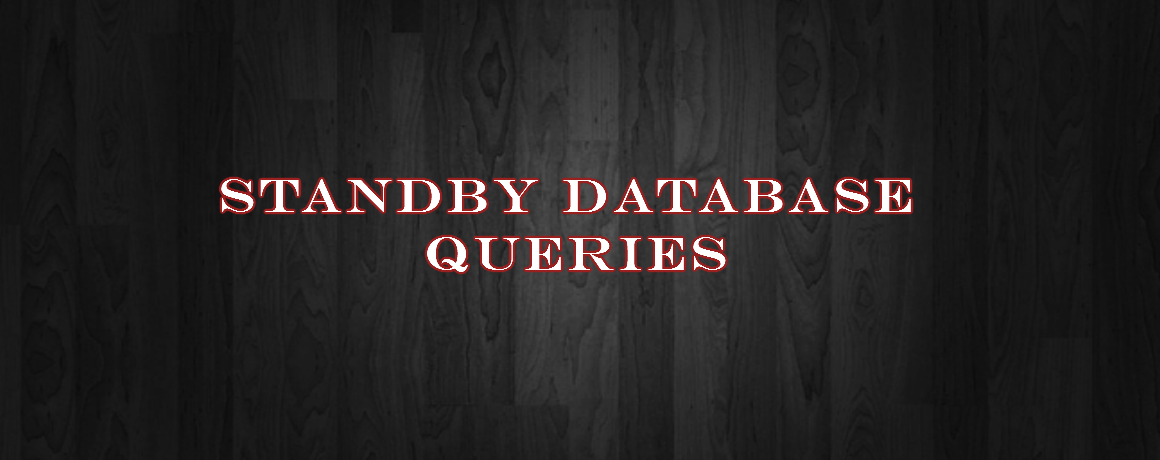Oracle ACE Pro
Oracle Solution Architect
Oracle E-Business Suite
Oracle Cloud Infrastructure
Oracle Fusion Middleware
Oracle Database Administration
Oracle Weblogic Administration
Oracle ACE Pro
Oracle Solution Architect
Oracle E-Business Suite
Oracle Cloud Infrastructure
Oracle Fusion Middleware
Oracle Database Administration
Oracle Weblogic Administration
Month: April 2017
[et_pb_section bb_built=”1″ _builder_version=”3.0.52″ background_image=”http://dev.oraclesolutions.pk/wp-content/uploads/2017/07/question-mark-2123967_1920.jpg” parallax=”on” parallax_method=”off” inner_shadow=”on”][et_pb_row _builder_version=”3.0.52″ parallax=”on” parallax_method=”off” background_position_1=”top_left” background_repeat_1=”no-repeat” make_fullwidth=”on” use_custom_width=”on” custom_width_percent=”100%” custom_width_px=”1702px” use_custom_gutter=”on” width_unit=”off” make_equal=”on”][et_pb_column type=”4_4″][et_pb_toggle _builder_version=”3.0.52″ title=”You are applying a patch , can you open another session and run adadmin ?” open=”off” use_background_color_gradient=”on” border_style=”ridge” background_color=”#ffffff” title_font=”Montserrat|on||on|” title_text_color=”#ffffff” body_font=”Montserrat||||” body_font_size=”15″ background_color_gradient_end=”#000000″ background_color_gradient_direction=”181deg” use_border_color=”on” icon_color=”#0c71c3″ title_font_size=”18″ body_line_height=”1em” border_width=”3px” background_color_gradient_start=”#ffffff” open_toggle_text_color=”#ff0000″ body_text_color=”#ffffff”]
- Yes, We can run unless you are running a process where workers are involved.
[/et_pb_toggle][et_pb_toggle _builder_version=”3.0.52″ title=”You are applying a patch , can you open another session in another node and run adpatch?” open=”off” use_background_color_gradient=”on” border_style=”ridge” background_color=”#ffffff” title_font=”Montserrat|on||on|” title_text_color=”#ffffff” body_font=”Montserrat||||” body_font_size=”15″ background_color_gradient_end=”#000000″ background_color_gradient_direction=”181deg” use_border_color=”on” icon_color=”#0c71c3″ title_font_size=”18″ body_line_height=”1em” border_width=”3px” background_color_gradient_start=”#ffffff” open_toggle_text_color=”#ff0000″ body_text_color=”#ffffff”]
No, because it will create tables while running first session when you start the 2nd session it will fail.
[/et_pb_toggle][et_pb_toggle _builder_version=”3.0.52″ title=”How to find opatch Version ?” open=”off” use_background_color_gradient=”on” border_style=”ridge” background_color=”#ffffff” title_font=”Montserrat|on||on|” title_text_color=”#ffffff” body_font=”Montserrat||||” body_font_size=”15″ background_color_gradient_end=”#000000″ background_color_gradient_direction=”181deg” use_border_color=”on” icon_color=”#0c71c3″ title_font_size=”18″ body_line_height=”1em” border_width=”3px” background_color_gradient_start=”#ffffff” open_toggle_text_color=”#ff0000″ body_text_color=”#ffffff”]
Opatch is utility to apply database patch , In order to find Opatch version execute $ORACLE_HOME/OPatch/opatch version
You can check OPatch -lsinventory
[/et_pb_toggle][et_pb_toggle _builder_version=”3.0.52″ title=”How you will see hidden files in linux/solaris?” open=”off” use_background_color_gradient=”on” border_style=”ridge” background_color=”#ffffff” title_font=”Montserrat|on||on|” title_text_color=”#ffffff” body_font=”Montserrat||||” body_font_size=”15″ background_color_gradient_end=”#000000″ background_color_gradient_direction=”181deg” use_border_color=”on” icon_color=”#0c71c3″ title_font_size=”18″ body_line_height=”1em” border_width=”3px” background_color_gradient_start=”#ffffff” open_toggle_text_color=”#ff0000″ body_text_color=”#ffffff”]
By writing ls -la in a linux terminal.
[/et_pb_toggle][et_pb_toggle _builder_version=”3.0.52″ title=”What is top command?” open=”off” use_background_color_gradient=”on” border_style=”ridge” background_color=”#ffffff” title_font=”Montserrat|on||on|” title_text_color=”#ffffff” body_font=”Montserrat||||” body_font_size=”15″ background_color_gradient_end=”#000000″ background_color_gradient_direction=”181deg” use_border_color=”on” icon_color=”#0c71c3″ title_font_size=”18″ body_line_height=”1em” border_width=”3px” background_color_gradient_start=”#ffffff” open_toggle_text_color=”#ff0000″ body_text_color=”#ffffff”]
Top is a operating system command, it will display top 10 processes which are taking high cpu and memory.
[/et_pb_toggle][et_pb_toggle _builder_version=”3.0.52″ title=”What is a patch?” open=”off” use_background_color_gradient=”on” border_style=”ridge” background_color=”#ffffff” title_font=”Montserrat|on||on|” title_text_color=”#ffffff” body_font=”Montserrat||||” body_font_size=”15″ background_color_gradient_end=”#000000″ background_color_gradient_direction=”181deg” use_border_color=”on” icon_color=”#0c71c3″ title_font_size=”18″ body_line_height=”1em” border_width=”3px” background_color_gradient_start=”#ffffff” open_toggle_text_color=”#ff0000″ body_text_color=”#ffffff”]
A patch can be a solution for a bug/it can be a new feature.
[/et_pb_toggle][et_pb_toggle _builder_version=”3.0.52″ title=”What are the different types of patches?” open=”off” use_background_color_gradient=”on” border_style=”ridge” background_color=”#ffffff” title_font=”Montserrat|on||on|” title_text_color=”#ffffff” body_font=”Montserrat||||” body_font_size=”15″ background_color_gradient_end=”#000000″ background_color_gradient_direction=”181deg” use_border_color=”on” icon_color=”#0c71c3″ title_font_size=”18″ body_line_height=”1em” border_width=”3px” background_color_gradient_start=”#ffffff” open_toggle_text_color=”#ff0000″ body_text_color=”#ffffff”]
Oneoff, mini packs, family packs, maintenance packs, rollup patches, consolidated patches.
[/et_pb_toggle][et_pb_toggle _builder_version=”3.0.52″ title=”What is a oneoff patch?” open=”off” use_background_color_gradient=”on” border_style=”ridge” background_color=”#ffffff” title_font=”Montserrat|on||on|” title_text_color=”#ffffff” body_font=”Montserrat||||” body_font_size=”15″ background_color_gradient_end=”#000000″ background_color_gradient_direction=”181deg” use_border_color=”on” icon_color=”#0c71c3″ title_font_size=”18″ body_line_height=”1em” border_width=”3px” background_color_gradient_start=”#ffffff” open_toggle_text_color=”#ff0000″ body_text_color=”#ffffff”]
An oneoff patch is a small patch of (20 to 90KB size) without any pre-requisites.
[/et_pb_toggle][et_pb_toggle _builder_version=”3.0.52″ title=”What is a mini pack ?” open=”off” use_background_color_gradient=”on” border_style=”ridge” background_color=”#ffffff” title_font=”Montserrat|on||on|” title_text_color=”#ffffff” body_font=”Montserrat||||” body_font_size=”15″ background_color_gradient_end=”#000000″ background_color_gradient_direction=”181deg” use_border_color=”on” icon_color=”#0c71c3″ title_font_size=”18″ body_line_height=”1em” border_width=”3px” background_color_gradient_start=”#ffffff” open_toggle_text_color=”#ff0000″ body_text_color=”#ffffff”]
A mini pack is one which will upgrade any product patchset level to next level like AD.H to AD.I
[/et_pb_toggle][et_pb_toggle _builder_version=”3.0.52″ title=”What is Family pack ?” open=”off” use_background_color_gradient=”on” border_style=”ridge” background_color=”#ffffff” title_font=”Montserrat|on||on|” title_text_color=”#ffffff” body_font=”Montserrat||||” body_font_size=”15″ background_color_gradient_end=”#000000″ background_color_gradient_direction=”181deg” use_border_color=”on” icon_color=”#0c71c3″ title_font_size=”18″ body_line_height=”1em” border_width=”3px” background_color_gradient_start=”#ffffff” open_toggle_text_color=”#ff0000″ body_text_color=”#ffffff”]
A Family pack is one which will upgrade the patchset level of all the products in that family to particular patchset level.
[/et_pb_toggle][et_pb_toggle _builder_version=”3.0.52″ title=”What is Maintenance pack ?” open=”off” use_background_color_gradient=”on” border_style=”ridge” background_color=”#ffffff” title_font=”Montserrat|on||on|” title_text_color=”#ffffff” body_font=”Montserrat||||” body_font_size=”15″ background_color_gradient_end=”#000000″ background_color_gradient_direction=”181deg” use_border_color=”on” icon_color=”#0c71c3″ title_font_size=”18″ body_line_height=”1em” border_width=”3px” background_color_gradient_start=”#ffffff” open_toggle_text_color=”#ff0000″ body_text_color=”#ffffff”]
A maintenance pack will upgrade applications from one version to another like 12.0.6 to 12.1.1.
[/et_pb_toggle][et_pb_toggle _builder_version=”3.0.52″ title=”What is a Rollup patch?” open=”off” use_background_color_gradient=”on” border_style=”ridge” background_color=”#ffffff” title_font=”Montserrat|on||on|” title_text_color=”#ffffff” body_font=”Montserrat||||” body_font_size=”15″ background_color_gradient_end=”#000000″ background_color_gradient_direction=”181deg” use_border_color=”on” icon_color=”#0c71c3″ title_font_size=”18″ body_line_height=”1em” border_width=”3px” background_color_gradient_start=”#ffffff” open_toggle_text_color=”#ff0000″ body_text_color=”#ffffff”]
A rollup patch is one which will deliver bug fixes identified after the release of any major application versions like 12.1.1 to 12.1.3
[/et_pb_toggle][et_pb_toggle _builder_version=”3.0.52″ title=”What is the other table where u can query what are the patches applied?” open=”off” use_background_color_gradient=”on” border_style=”ridge” background_color=”#ffffff” title_font=”Montserrat|on||on|” title_text_color=”#ffffff” body_font=”Montserrat||||” body_font_size=”15″ background_color_gradient_end=”#000000″ background_color_gradient_direction=”181deg” use_border_color=”on” icon_color=”#0c71c3″ title_font_size=”18″ body_line_height=”1em” border_width=”3px” background_color_gradient_start=”#ffffff” open_toggle_text_color=”#ff0000″ body_text_color=”#ffffff”]
Ad_applied_patches
[/et_pb_toggle][et_pb_toggle _builder_version=”3.0.52″ title=”What is the difference between ad_bugs and ad_applied_patches?” open=”off” use_background_color_gradient=”on” border_style=”ridge” background_color=”#ffffff” title_font=”Montserrat|on||on|” title_text_color=”#ffffff” body_font=”Montserrat||||” body_font_size=”15″ background_color_gradient_end=”#000000″ background_color_gradient_direction=”181deg” use_border_color=”on” icon_color=”#0c71c3″ title_font_size=”18″ body_line_height=”1em” border_width=”3px” background_color_gradient_start=”#ffffff” open_toggle_text_color=”#ff0000″ body_text_color=”#ffffff”]
A patch can deliver solution for more than one bug, ad_applied_patches may not give u the perfect information as in case of ad_bugs.
[/et_pb_toggle][et_pb_toggle _builder_version=”3.0.52″ title=”How can you apply a patch on Oracle Applications?” open=”off” use_background_color_gradient=”on” border_style=”ridge” background_color=”#ffffff” title_font=”Montserrat|on||on|” title_text_color=”#ffffff” body_font=”Montserrat||||” body_font_size=”15″ background_color_gradient_end=”#000000″ background_color_gradient_direction=”181deg” use_border_color=”on” icon_color=”#0c71c3″ title_font_size=”18″ body_line_height=”1em” border_width=”3px” background_color_gradient_start=”#ffffff” open_toggle_text_color=”#ff0000″ body_text_color=”#ffffff”]
Mostly Applications Patches are applied through adpatch.
[/et_pb_toggle][et_pb_toggle _builder_version=”3.0.52″ title=”What passwords you need, to apply a patch ?” open=”off” use_background_color_gradient=”on” border_style=”ridge” background_color=”#ffffff” title_font=”Montserrat|on||on|” title_text_color=”#ffffff” body_font=”Montserrat||||” body_font_size=”15″ background_color_gradient_end=”#000000″ background_color_gradient_direction=”181deg” use_border_color=”on” icon_color=”#0c71c3″ title_font_size=”18″ body_line_height=”1em” border_width=”3px” background_color_gradient_start=”#ffffff” open_toggle_text_color=”#ff0000″ body_text_color=”#ffffff”]
APPS and SYSTEM user passwords
[/et_pb_toggle][et_pb_toggle _builder_version=”3.0.52″ title=”What tables adpatch will create and when?” open=”off” use_background_color_gradient=”on” border_style=”ridge” background_color=”#ffffff” title_font=”Montserrat|on||on|” title_text_color=”#ffffff” body_font=”Montserrat||||” body_font_size=”15″ background_color_gradient_end=”#000000″ background_color_gradient_direction=”181deg” use_border_color=”on” icon_color=”#0c71c3″ title_font_size=”18″ body_line_height=”1em” border_width=”3px” background_color_gradient_start=”#ffffff” open_toggle_text_color=”#ff0000″ body_text_color=”#ffffff”]
Adpatch will create FND_INSTALL_PROCESSES and AD_DEFERRED_JOBS table when it will apply D, G and U drivers.
[/et_pb_toggle][et_pb_toggle _builder_version=”3.0.52″ title=”What is the significance of FND_INSTALL_PROCESSES and AD_DEFERRED_JOBS Table?” open=”off” use_background_color_gradient=”on” border_style=”ridge” background_color=”#ffffff” title_font=”Montserrat|on||on|” title_text_color=”#ffffff” body_font=”Montserrat||||” body_font_size=”15″ background_color_gradient_end=”#000000″ background_color_gradient_direction=”181deg” use_border_color=”on” icon_color=”#0c71c3″ title_font_size=”18″ body_line_height=”1em” border_width=”3px” background_color_gradient_start=”#ffffff” open_toggle_text_color=”#ff0000″ body_text_color=”#ffffff”]
FND_INSTALL_PROCESSES table will store the worker information like what job is assigned to which worker and its status. AD_DEFERRED_JOBS will come into picture when some worker is failed, it will be moved to AD_DEFERRED_JOBS table, from where again adpatch will take that job and try to reasign, after doing this 3 times if still that worker is failing, then adpatch will stop patching and throw the error that particular worker has failed.
[/et_pb_toggle][et_pb_toggle _builder_version=”3.0.52″ title=”If it is a multi-node installation which driver we need to apply on which node?” open=”off” use_background_color_gradient=”on” border_style=”ridge” background_color=”#ffffff” title_font=”Montserrat|on||on|” title_text_color=”#ffffff” body_font=”Montserrat||||” body_font_size=”15″ background_color_gradient_end=”#000000″ background_color_gradient_direction=”181deg” use_border_color=”on” icon_color=”#0c71c3″ title_font_size=”18″ body_line_height=”1em” border_width=”3px” background_color_gradient_start=”#ffffff” open_toggle_text_color=”#ff0000″ body_text_color=”#ffffff”]
We need to apply C,D,G on concurrent node and C, G on web node. If it is U-driver we need to apply it on all nodes.
[/et_pb_toggle][et_pb_toggle _builder_version=”3.0.52″ title=”While applying a application patch is that necessary that your database and listener should be up?” open=”off” use_background_color_gradient=”on” border_style=”ridge” background_color=”#ffffff” title_font=”Montserrat|on||on|” title_text_color=”#ffffff” body_font=”Montserrat||||” body_font_size=”15″ background_color_gradient_end=”#000000″ background_color_gradient_direction=”181deg” use_border_color=”on” icon_color=”#0c71c3″ title_font_size=”18″ body_line_height=”1em” border_width=”3px” background_color_gradient_start=”#ffffff” open_toggle_text_color=”#ff0000″ body_text_color=”#ffffff”]
Yes, because adpatch will connect to database and updates database tables.
[/et_pb_toggle][/et_pb_column][/et_pb_row][/et_pb_section]
[et_pb_section bb_built=”1″ _builder_version=”3.0.52″ background_image=”http://dev.oraclesolutions.pk/wp-content/uploads/2017/07/question-mark-2123967_1920.jpg” parallax=”on” parallax_method=”off” inner_shadow=”on”][et_pb_row _builder_version=”3.0.52″ parallax=”on” parallax_method=”off” background_position_1=”top_left” background_repeat_1=”no-repeat” make_fullwidth=”on” use_custom_width=”on” custom_width_percent=”100%” custom_width_px=”1702px” use_custom_gutter=”on” width_unit=”off” make_equal=”on”][et_pb_column type=”4_4″][et_pb_toggle _builder_version=”3.0.52″ title=”Briefly Describe the architecture of Oracle Applications?” open=”off” use_background_color_gradient=”on” border_style=”ridge” background_color=”#ffffff” title_font=”Montserrat|on||on|” title_text_color=”#ffffff” body_font=”Montserrat||||” body_font_size=”15″ background_color_gradient_end=”#000000″ background_color_gradient_direction=”181deg” use_border_color=”on” icon_color=”#0c71c3″ title_font_size=”18″ body_line_height=”1em” border_width=”3px” background_color_gradient_start=”#ffffff” open_toggle_text_color=”#ff0000″ body_text_color=”#ffffff”]
Oracle Applications follow a Three tier architecture:
- Database Tier containing the RDBMS database.
- Middle-Tier containing various servers like Forms Server, Web Server, Concurrent Processing Server, Admin Server, Reports Server.
- Desktop Tier, the client desktop, through which users access Oracle Applications.
[/et_pb_toggle][et_pb_toggle _builder_version=”3.0.52″ title=”Does a Tier mean a Physical Machine in Oracle Applications?” open=”off” use_background_color_gradient=”on” border_style=”ridge” background_color=”#ffffff” title_font=”Montserrat|on||on|” title_text_color=”#ffffff” body_font=”Montserrat||||” body_font_size=”15″ background_color_gradient_end=”#000000″ background_color_gradient_direction=”181deg” use_border_color=”on” icon_color=”#0c71c3″ title_font_size=”18″ body_line_height=”1em” border_width=”3px” background_color_gradient_start=”#ffffff” open_toggle_text_color=”#ff0000″ body_text_color=”#ffffff”]
No, a Tier does not mean a physical machine. It is basically a logical portioning.
Each tier has more than one physical server and each physical server can accommodate more than one different tier.
For example: The middle-tier can be configured in 4-5 different servers and any server can be used for hosting database as well as Web server.
[/et_pb_toggle][et_pb_toggle _builder_version=”3.0.52″ title=”How is the three-tier architecture different from client server architecture model and which is a better model? ” open=”off” use_background_color_gradient=”on” border_style=”ridge” background_color=”#ffffff” title_font=”Montserrat|on||on|” title_text_color=”#ffffff” body_font=”Montserrat||||” body_font_size=”15″ background_color_gradient_end=”#000000″ background_color_gradient_direction=”181deg” use_border_color=”on” icon_color=”#0c71c3″ title_font_size=”18″ body_line_height=”1em” border_width=”3px” background_color_gradient_start=”#ffffff” open_toggle_text_color=”#ff0000″ body_text_color=”#ffffff”]
In a client-server architecture, you need to install the application software in all the client’s machines. If you are using 50 computers as clients, you need to install the application software in 50 computers, whereas, The three-tier architecture eliminates this issue.
The application software is hosted centrally in the Middle Tier and there is no need to install it in all the client’s machine.
[/et_pb_toggle][et_pb_toggle _builder_version=”3.0.52″ title=”If I am not installing the client software in the desktop PC, then how will I access Oracle Applications? ” open=”off” use_background_color_gradient=”on” border_style=”ridge” background_color=”#ffffff” title_font=”Montserrat|on||on|” title_text_color=”#ffffff” body_font=”Montserrat||||” body_font_size=”15″ background_color_gradient_end=”#000000″ background_color_gradient_direction=”181deg” use_border_color=”on” icon_color=”#0c71c3″ title_font_size=”18″ body_line_height=”1em” border_width=”3px” background_color_gradient_start=”#ffffff” open_toggle_text_color=”#ff0000″ body_text_color=”#ffffff”]
The client desktop accesses Oracle Applications through JAVA-enabled web browser with JInitiator or JRE and forms client applet.
[/et_pb_toggle][et_pb_toggle _builder_version=”3.0.52″ title=”What is forms client applet?” open=”off” use_background_color_gradient=”on” border_style=”ridge” background_color=”#ffffff” title_font=”Montserrat|on||on|” title_text_color=”#ffffff” body_font=”Montserrat||||” body_font_size=”15″ background_color_gradient_end=”#000000″ background_color_gradient_direction=”181deg” use_border_color=”on” icon_color=”#0c71c3″ title_font_size=”18″ body_line_height=”1em” border_width=”3px” background_color_gradient_start=”#ffffff” open_toggle_text_color=”#ff0000″ body_text_color=”#ffffff”]
For running forms from the client computer, the forms client applet must run in the client desktop. It supports all Oracle Application forms including the custom forms.
[/et_pb_toggle][et_pb_toggle _builder_version=”3.0.52″ title=”How many Homes are there in Oracle Applications?” open=”off” use_background_color_gradient=”on” border_style=”ridge” background_color=”#ffffff” title_font=”Montserrat|on||on|” title_text_color=”#ffffff” body_font=”Montserrat||||” body_font_size=”15″ background_color_gradient_end=”#000000″ background_color_gradient_direction=”181deg” use_border_color=”on” icon_color=”#0c71c3″ title_font_size=”18″ body_line_height=”1em” border_width=”3px” background_color_gradient_start=”#ffffff” open_toggle_text_color=”#ff0000″ body_text_color=”#ffffff”]
Oracle applications have three Oracle Homes:
- Database Oracle Home in the database tier that acts as the Oracle Home for the Oracle database.
- Oracle Home in the application tier. It is called the technology stack Oracle Home and used by forms, reports.
- IAS Oracle Home, used by the Oracle HTTP server. It is used by the Web listener.
[/et_pb_toggle][et_pb_toggle _builder_version=”3.0.52″ title=”What does the application tier consist of?” open=”off” use_background_color_gradient=”on” border_style=”ridge” background_color=”#ffffff” title_font=”Montserrat|on||on|” title_text_color=”#ffffff” body_font=”Montserrat||||” body_font_size=”15″ background_color_gradient_end=”#000000″ background_color_gradient_direction=”181deg” use_border_color=”on” icon_color=”#0c71c3″ title_font_size=”18″ body_line_height=”1em” border_width=”3px” background_color_gradient_start=”#ffffff” open_toggle_text_color=”#ff0000″ body_text_color=”#ffffff”]
The Application Tier is the place where the application software is located. It also hosts a large number of servers which interact with the database and the client tier. The application tier architecture shifts software administration from the desktop to the middle tier removing the burden of installing the application software at every client.
[/et_pb_toggle][et_pb_toggle _builder_version=”3.0.52″ title=”Which servers are hosted from the application tier?” open=”off” use_background_color_gradient=”on” border_style=”ridge” background_color=”#ffffff” title_font=”Montserrat|on||on|” title_text_color=”#ffffff” body_font=”Montserrat||||” body_font_size=”15″ background_color_gradient_end=”#000000″ background_color_gradient_direction=”181deg” use_border_color=”on” icon_color=”#0c71c3″ title_font_size=”18″ body_line_height=”1em” border_width=”3px” background_color_gradient_start=”#ffffff” open_toggle_text_color=”#ff0000″ body_text_color=”#ffffff”]
The following servers constitute the application tier:
- Oracle HTTP server (Apache)
- Forms server
- Reports server
- Admin Server
- Concurrent Processing Server
[/et_pb_toggle][et_pb_toggle _builder_version=”3.0.52″ title=”What is HTTP Server?” open=”off” use_background_color_gradient=”on” border_style=”ridge” background_color=”#ffffff” title_font=”Montserrat|on||on|” title_text_color=”#ffffff” body_font=”Montserrat||||” body_font_size=”15″ background_color_gradient_end=”#000000″ background_color_gradient_direction=”181deg” use_border_color=”on” icon_color=”#0c71c3″ title_font_size=”18″ body_line_height=”1em” border_width=”3px” background_color_gradient_start=”#ffffff” open_toggle_text_color=”#ff0000″ body_text_color=”#ffffff”]
Oracle HTTP Server is the Web Server which is used by Oracle Applications. It Processes all the requests received from the clients.
[/et_pb_toggle][et_pb_toggle _builder_version=”3.0.52″ title=”What is the difference between Apache and Oracle HTTP Server?” open=”off” use_background_color_gradient=”on” border_style=”ridge” background_color=”#ffffff” title_font=”Montserrat|on||on|” title_text_color=”#ffffff” body_font=”Montserrat||||” body_font_size=”15″ background_color_gradient_end=”#000000″ background_color_gradient_direction=”181deg” use_border_color=”on” icon_color=”#0c71c3″ title_font_size=”18″ body_line_height=”1em” border_width=”3px” background_color_gradient_start=”#ffffff” open_toggle_text_color=”#ff0000″ body_text_color=”#ffffff”]
Oracle HTTP server is the customized form of the Apache. Oracle has customized the Apache Web server as per there requirements which is known as Oracle HTTP Server.
[/et_pb_toggle][et_pb_toggle _builder_version=”3.0.52″ title=”What is Admin Server?” open=”off” use_background_color_gradient=”on” border_style=”ridge” background_color=”#ffffff” title_font=”Montserrat|on||on|” title_text_color=”#ffffff” body_font=”Montserrat||||” body_font_size=”15″ background_color_gradient_end=”#000000″ background_color_gradient_direction=”181deg” use_border_color=”on” icon_color=”#0c71c3″ title_font_size=”18″ body_line_height=”1em” border_width=”3px” background_color_gradient_start=”#ffffff” open_toggle_text_color=”#ff0000″ body_text_color=”#ffffff”]
The Admin Server is that node of the APPL_TOP from which all maintenance activities for Oracle Applications are performed.
[/et_pb_toggle][et_pb_toggle _builder_version=”3.0.52″ title=”What kind of activities can be performed by admin server?” open=”off” use_background_color_gradient=”on” border_style=”ridge” background_color=”#ffffff” title_font=”Montserrat|on||on|” title_text_color=”#ffffff” body_font=”Montserrat||||” body_font_size=”15″ background_color_gradient_end=”#000000″ background_color_gradient_direction=”181deg” use_border_color=”on” icon_color=”#0c71c3″ title_font_size=”18″ body_line_height=”1em” border_width=”3px” background_color_gradient_start=”#ffffff” open_toggle_text_color=”#ff0000″ body_text_color=”#ffffff”]
- Applying the patches
- Maintaining Oracle Applications
- Applying the ad utilities
- Upgrading Oracle Applications
[/et_pb_toggle][et_pb_toggle _builder_version=”3.0.52″ title=”What is Concurrent Processing Server?” open=”off” use_background_color_gradient=”on” border_style=”ridge” background_color=”#ffffff” title_font=”Montserrat|on||on|” title_text_color=”#ffffff” body_font=”Montserrat||||” body_font_size=”15″ background_color_gradient_end=”#000000″ background_color_gradient_direction=”181deg” use_border_color=”on” icon_color=”#0c71c3″ title_font_size=”18″ body_line_height=”1em” border_width=”3px” background_color_gradient_start=”#ffffff” open_toggle_text_color=”#ff0000″ body_text_color=”#ffffff”]
When an Oracle Application user submits a request to run a program, it is called Concurrent Requests.
Concurrent Managers are the programs responsible for running the concurrent requests. Concurrent requests are processed from Concurrent Processing Server.
[/et_pb_toggle][et_pb_toggle _builder_version=”3.0.52″ title=”What is Forms Server?” open=”off” use_background_color_gradient=”on” border_style=”ridge” background_color=”#ffffff” title_font=”Montserrat|on||on|” title_text_color=”#ffffff” body_font=”Montserrat||||” body_font_size=”15″ background_color_gradient_end=”#000000″ background_color_gradient_direction=”181deg” use_border_color=”on” icon_color=”#0c71c3″ title_font_size=”18″ body_line_height=”1em” border_width=”3px” background_color_gradient_start=”#ffffff” open_toggle_text_color=”#ff0000″ body_text_color=”#ffffff”]
Form server is that server from which the forms are hosted. It’s a component of Middle Tier. The Forms user interface is used in the desktop clients for working in Oracle Applications.
[/et_pb_toggle][et_pb_toggle _builder_version=”3.0.52″ title=”What is reports server?” open=”off” use_background_color_gradient=”on” border_style=”ridge” background_color=”#ffffff” title_font=”Montserrat|on||on|” title_text_color=”#ffffff” body_font=”Montserrat||||” body_font_size=”15″ background_color_gradient_end=”#000000″ background_color_gradient_direction=”181deg” use_border_color=”on” icon_color=”#0c71c3″ title_font_size=”18″ body_line_height=”1em” border_width=”3px” background_color_gradient_start=”#ffffff” open_toggle_text_color=”#ff0000″ body_text_color=”#ffffff”]
Report server is also a component of the middle tier and is hosted in the same node of the concurrent processing server.
[/et_pb_toggle][et_pb_toggle _builder_version=”3.0.52″ title=”What are the tables which store the Information about the various application users and their passwords?” open=”off” use_background_color_gradient=”on” border_style=”ridge” background_color=”#ffffff” title_font=”Montserrat|on||on|” title_text_color=”#ffffff” body_font=”Montserrat||||” body_font_size=”15″ background_color_gradient_end=”#000000″ background_color_gradient_direction=”181deg” use_border_color=”on” icon_color=”#0c71c3″ title_font_size=”18″ body_line_height=”1em” border_width=”3px” background_color_gradient_start=”#ffffff” open_toggle_text_color=”#ff0000″ body_text_color=”#ffffff”]
FND_USERS and FND_ORACLE_USERID stores the information about the applications users and their passwords.
[/et_pb_toggle][et_pb_toggle _builder_version=”3.0.52″ title=”Name adadmin utilities and Its location?” open=”off” use_background_color_gradient=”on” border_style=”ridge” background_color=”#ffffff” title_font=”Montserrat|on||on|” title_text_color=”#ffffff” body_font=”Montserrat||||” body_font_size=”15″ background_color_gradient_end=”#000000″ background_color_gradient_direction=”181deg” use_border_color=”on” icon_color=”#0c71c3″ title_font_size=”18″ body_line_height=”1em” border_width=”3px” background_color_gradient_start=”#ffffff” open_toggle_text_color=”#ff0000″ body_text_color=”#ffffff”]
Location of Adadmin utilities is $AD_TOP/bin.
Below are the name of Adadmin utilities provided by Oracle Applications.
- adadmin
- adpatch
- adsplice
- adident
- adrelink
- adlicmgr
[/et_pb_toggle][et_pb_toggle _builder_version=”3.0.52″ title=”What is the Diff between APPS Schema and other Schemas?” open=”off” use_background_color_gradient=”on” border_style=”ridge” background_color=”#ffffff” title_font=”Montserrat|on||on|” title_text_color=”#ffffff” body_font=”Montserrat||||” body_font_size=”15″ background_color_gradient_end=”#000000″ background_color_gradient_direction=”181deg” use_border_color=”on” icon_color=”#0c71c3″ title_font_size=”18″ body_line_height=”1em” border_width=”3px” background_color_gradient_start=”#ffffff” open_toggle_text_color=”#ff0000″ body_text_color=”#ffffff”]
APPS schema contains only Synonyms. We can’t create tables in apps schema, where as other schema contains tables, and all the objects. Here only we will create the tables and giving grants on created tables. Almost every time we connect to APPS schema only.
[/et_pb_toggle][et_pb_toggle _builder_version=”3.0.52″ title=”Difference between Application Developer and System Administrator?” open=”off” use_background_color_gradient=”on” border_style=”ridge” background_color=”#ffffff” title_font=”Montserrat|on||on|” title_text_color=”#ffffff” body_font=”Montserrat||||” body_font_size=”15″ background_color_gradient_end=”#000000″ background_color_gradient_direction=”181deg” use_border_color=”on” icon_color=”#0c71c3″ title_font_size=”18″ body_line_height=”1em” border_width=”3px” background_color_gradient_start=”#ffffff” open_toggle_text_color=”#ff0000″ body_text_color=”#ffffff”]
Role of Technical Consultant:
1.Designing New Forms, Programs and Reports
2. Forms and Reports customization
3. Developing Interfaces
4. Developing PL/SQL stored procedures
5. Workflow Automations
Role of System Administrator:
1. Define Logon Users
2. Define New/Custom Responsibility
3. Define Data Groups
4. Define Concurrent Managers
5. Define Printers
6. Test Network Preferences
7. Define/Add new Modules
Role of an Apps DBA:
1.Installation of Application
2. Up-Gradation
3. Migration
4. Patches
5. Routing maintenance of Application
6. Cloning of Oracle Applications
[/et_pb_toggle][/et_pb_column][/et_pb_row][/et_pb_section]
AD Controller is ad utilities used to monitor/ control the workers execution.




